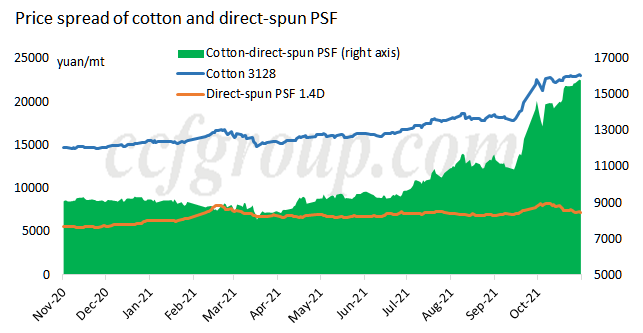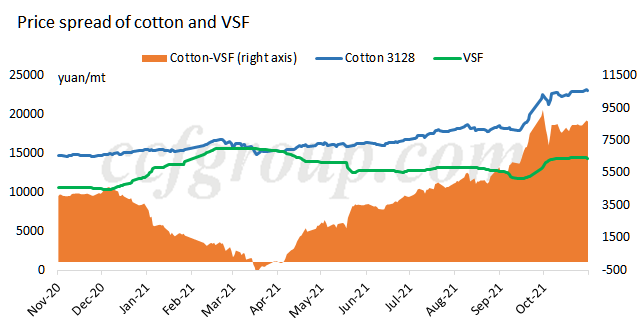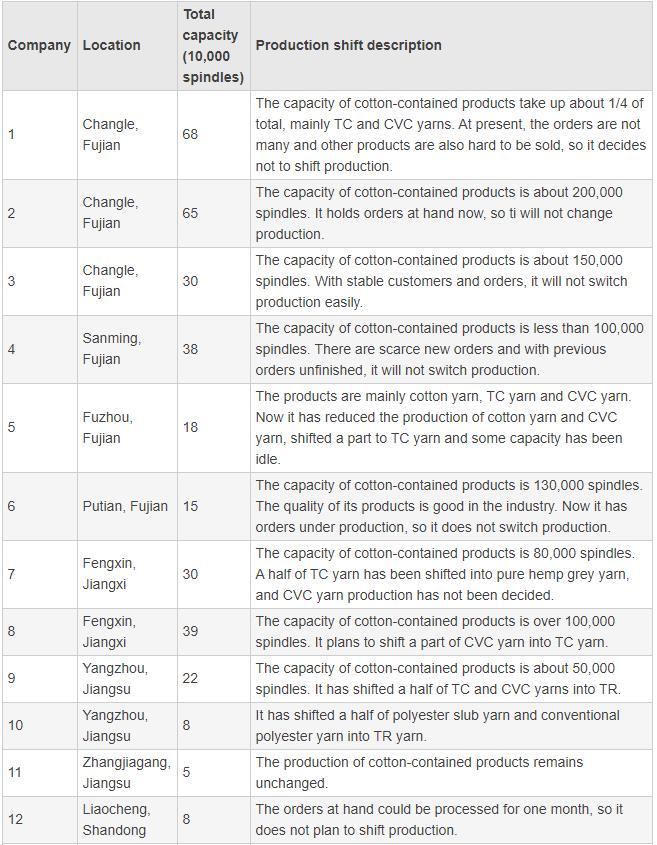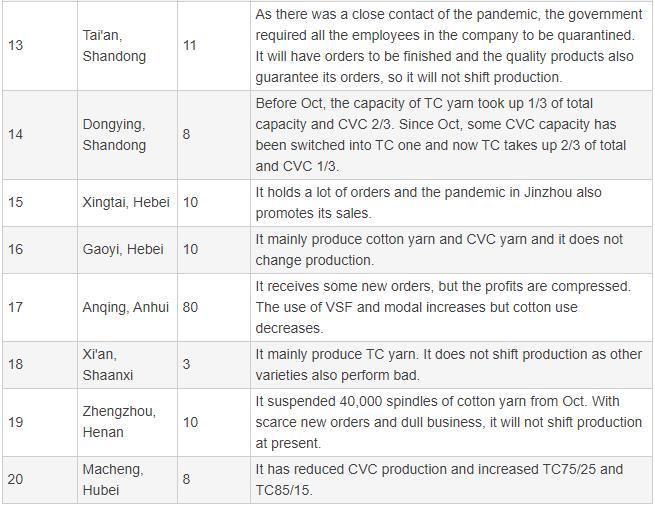The surge of cotton during late Sep to Oct has widened the price spread between cotton and other textile raw materials. Currently, cotton 3128 is about 15,800yuan/mt higher than direct-spun PSF semi-dull 1.4D, up nearly 5,000yuan/mt; and about 8,700yuan/mt higher than VSF 1.2D, up about 3,000yuan/mt.


When the price spread expands to a certain extent, the production shift happens. But the production shift depends on not only the price gap, but also the demand and continuity of the market situation. Cotton yarn and polyester/cotton yarn have weakened since late Aug. In Sep and Oct, the rush procurement of seed cotton soared the price of cotton and triggered obvious contradiction between the cost and demand, making downstream resistant to cotton. By now, the procurement of seed cotton is coming to an end and the costs of new cotton stabilized at over 24,000yuan/mt. Therefore, some companies have changed or plan to change the products they are producing.


Among above 20 companies, 9 have shifted or cut production, accounting for 45%. They change from CVC to TC, from cotton yarn to TC blended yarn or from TC to TR blended. It is obviously seen that the use of cotton is reducing and PSF and VSF increase instead. In addition, yarn mills in Hebei report dull business and scarce new orders. Most of them do not have inventory pressure now. Those companies with good fames have orders to be finished while other companies are passive. This situation will be more obvious as the market softens. Later, more and more yarn mills will cut or shift production under inventory. After all, cotton is much higher than VSF and PSF and harder to be accepted by downstream mills.